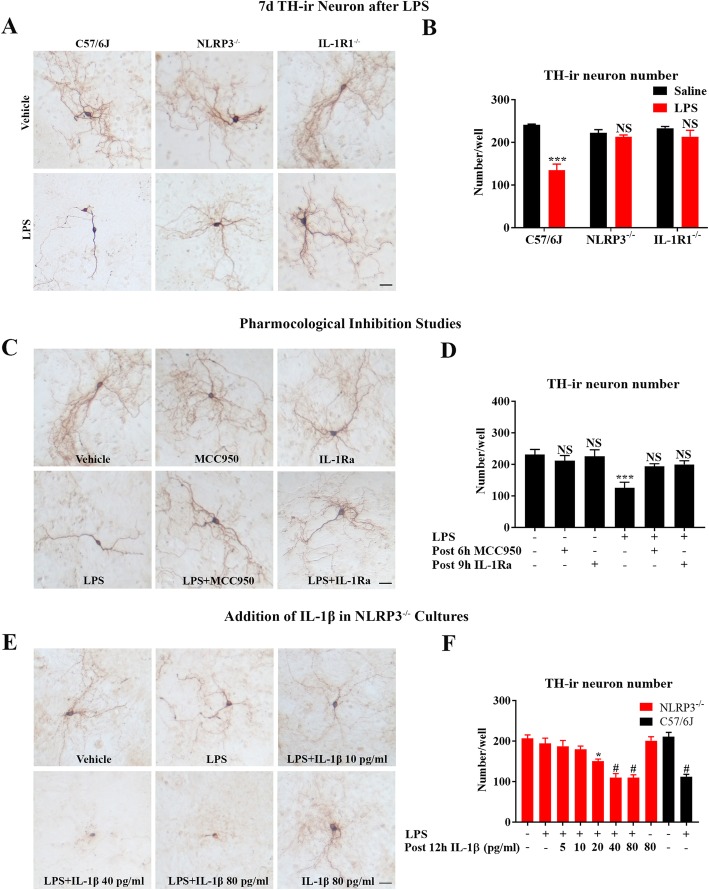Fig. 5.
Genetic or pharmacological inhibition of NLRP3 or IL-1R1 does not affect TNFα release but protects dopaminergic neurons against LPS-induced toxicity in neuron-glia cultures. Neuron-glial cultures prepared from WT, NLRP3−/−, and IL-1R1−/− mice were treated with LPS (20 ng/ml) or vehicle medium. Data were from three independent experiments. Scale bar = 50 μm. At 7 days after LPS, representative images of TH immunostaining (dopaminergic neurons) (a) and TH-ir neuron number (b) were shown. At 7 days after LPS injection and post-treatment of MCC950 (10 μM at 6 h) and IL-1Ra (0.5 μg/ml at 9 h), representative images of TH immunostaining (c) and TH-ir neuron number (d) were shown. b, d ****p < 0.0001 and NS compared with respective vehicle medium group. Two-way ANOVA followed by Bonferroni post hoc multiple comparison test for (b) and one-way ANOVA followed by Bonferroni post hoc multiple comparison test for (d). At 7 days after LPS and post 12 h addition of different amounts of recombinant mouse IL-1β to NLRP3−/− neuron-glial cultures, representative images of TH immunostaining (e) and TH-ir neuron number (f). *p < 0.5 and #p < 0.0001 compared with respective vehicle group. One-way ANOVA followed by Bonferroni post hoc multiple comparison test

